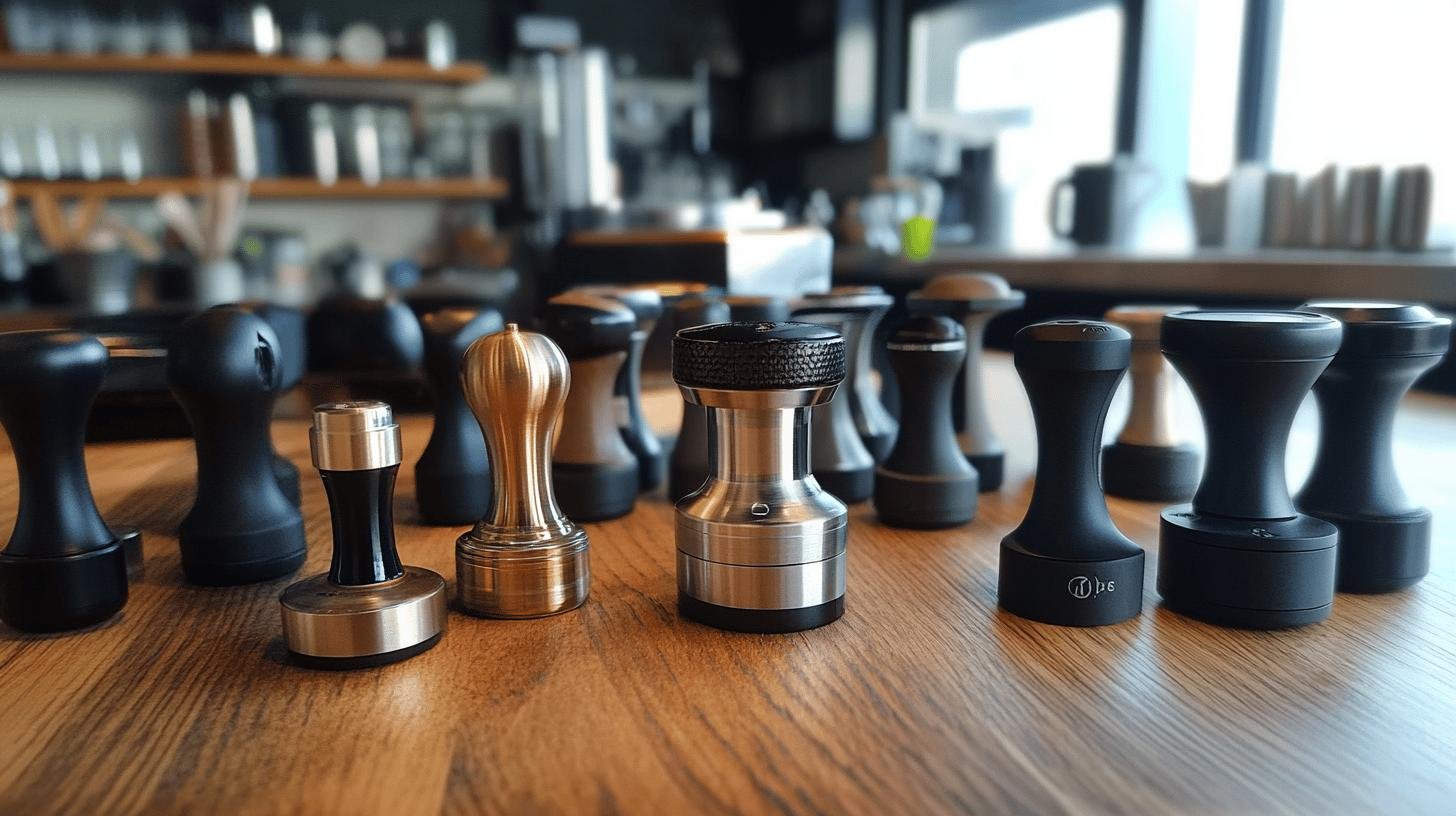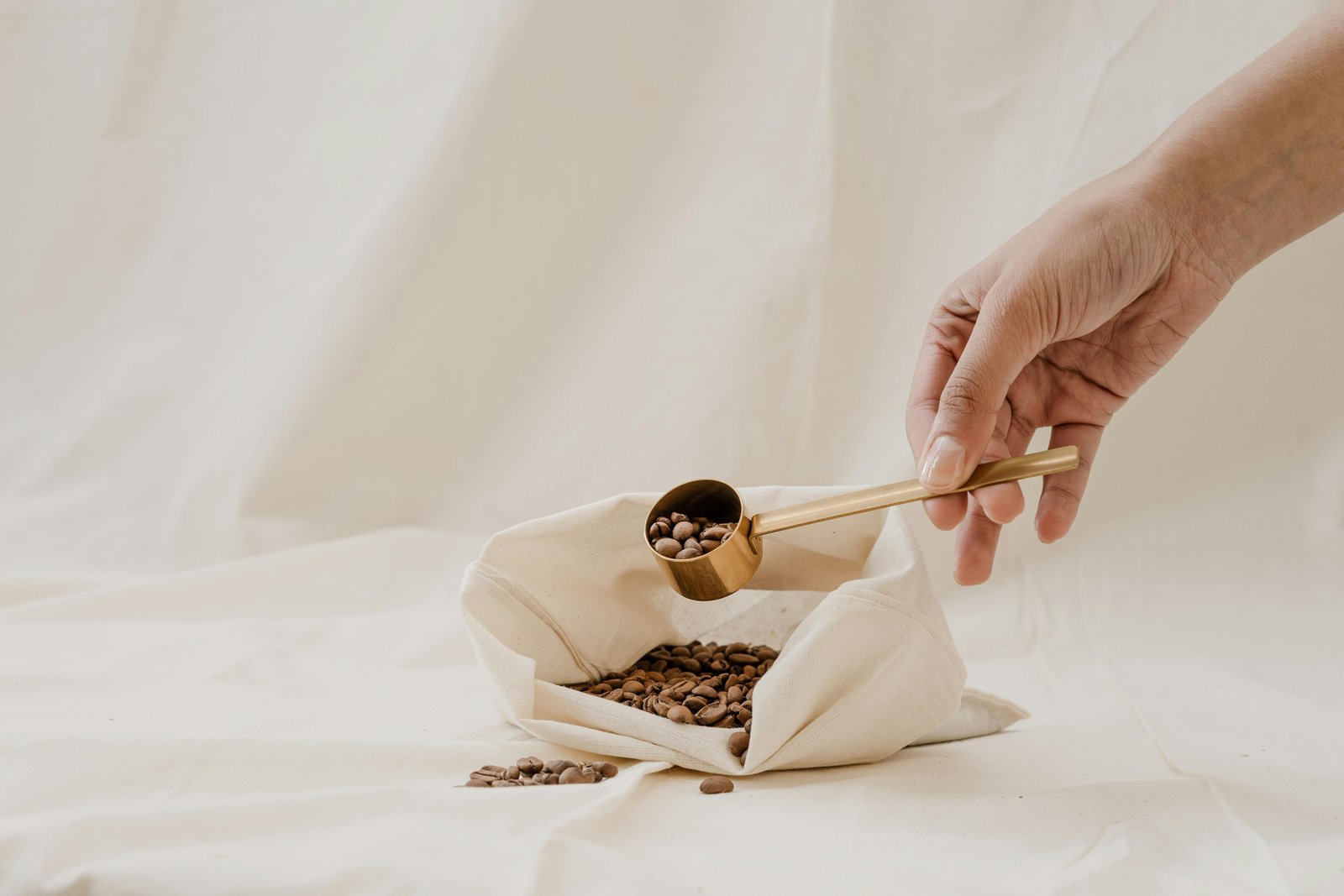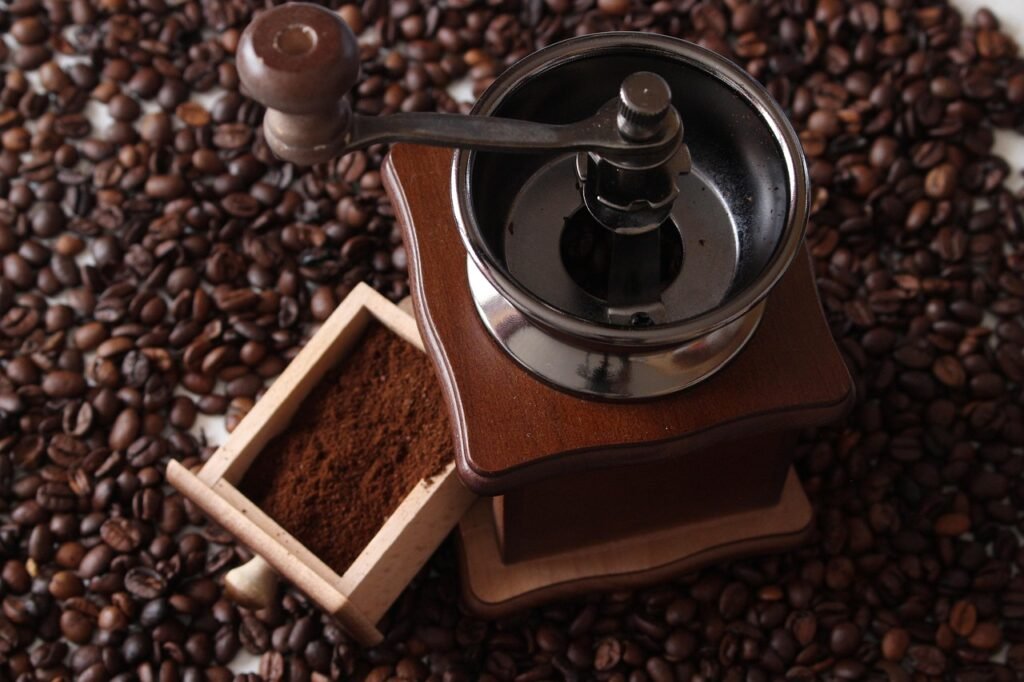
Artisanal Rituals for a Memorable Customer Experience
How can brands create a more balanced and memorable customer experience by blending artisanal product quality with thoughtful everyday rituals that keep people coming back?

Ever wondered why your espresso shots fall flat, lacking that rich, full-bodied flavor? The secret lies in mastering the art and science of tamping coffee beans. Tamping ensures water flows slowly and evenly through the coffee grounds, extracting maximum flavor.
This guide delves into essential techniques and tools on how to tamper coffee beans for consistently delicious espresso shots.
Tamping coffee beans is crucial for making a perfect espresso shot. This process involves compressing ground coffee in the portafilter to form a uniform and level coffee puck.
The main reason for tamping is to ensure water flows through the coffee grounds evenly. This helps extract the maximum flavor. If the grounds aren’t tamped properly, water may flow through less dense areas, resulting in a weak and uneven espresso.
To tamper coffee beans, you’ll need several essential tools.
First, high-quality espresso beans are a must. A proper bean grinder ensures a consistent grind size, crucial for even extraction.
You’ll also need an espresso machine with a portafilter for brewing. A scale helps measure the precise amount of coffee grounds for consistency.
A tamper, which can be flat, convex, or calibrated, is used to compress the grounds.
Finally, a tamping mat provides a stable surface to ensure even tamping.

Flat Tampers: Flat tampers are the most common type. They provide even pressure across the surface of the coffee grounds, helping to create a uniform coffee puck. This uniformity is crucial for consistent extraction, preventing water from channeling through less dense areas.
Convex Tampers: Convex tampers have a slightly rounded base, which compacts the edges of the coffee puck more than the center. This design can reduce the risk of channeling, where water finds an easier path through the coffee puck, leading to uneven extraction.
Calibrated Tampers: These tampers provide consistent pressure with each use. They have a mechanism that clicks or stops when a specific pressure is applied. This feature helps beginners develop a feel for the correct pressure needed for effective tamping.
Manual Tampers: Whether flat, convex, or calibrated, manual tampers offer full control over the tamping process. While they require skill and practice for consistency, they allow for customization based on personal preferences and techniques.
| Type of Tamper | Description | Benefits |
|---|---|---|
| Flat | Provides even pressure across the coffee grounds | Ensures uniform extraction and prevents channeling |
| Convex | Slightly rounded base that compacts edges more | Reduces channeling and offers balanced flavor |
| Calibrated | Mechanism that ensures consistent pressure | Helps beginners achieve uniform extraction |
| Manual | Offers full control over tamping process | Allows for customization based on technique |
Proper tamping technique is key for the best espresso shots. The goal is to create a level and compact coffee bed, ensuring water flows through the grounds evenly.
Uneven tamping can cause channeling, where water bypasses certain areas, leading to inconsistent extraction. This affects the flavor balance, making the espresso bitter or weak. A precise and consistent tamp helps control the flow rate, extracting the full flavors from the beans.

Investing in the best coffee tamper can greatly enhance the flavor and consistency of your espresso shots. A precision coffee tamper makes the coffee bed level and compact, allowing for uniform water flow through the grounds. Using a high-quality tamper helps baristas achieve a balanced and rich flavor profile, maximizing the coffee beans’ potential.
Consistent tamping improves extraction and achieves a perfect balance in each shot. A quality tamper maintains steady pressure, crucial for creating a compact coffee puck.
When choosing a coffee tamper, consider the material and handle design.
Tampers come in materials like wood, metal, and plastic. Metal tampers are durable and solid, while wooden handles offer comfort and aesthetic appeal. Plastic tampers are lightweight but may lack durability. The handle’s size and shape should fit comfortably in your hand for consistent tamping pressure, reducing fatigue during repeated use.
Ensuring a good fit between the tamper and portafilter basket is crucial. Measure your portafilter basket’s inner diameter and choose a tamper that’s slightly smaller, around 0.75 mm less, for smooth insertion and removal. A well-fitting tamper ensures even pressure distribution, preventing channeling and promoting uniform extraction. An ill-fitting tamper can lead to uneven tamping and inconsistent espresso quality.
Price ranges for tampers vary, typically $40 to $100 for quality options. In this range, expect durable construction, ergonomic designs, and features like adjustable depth settings. Higher-end tampers often include calibrated pressure mechanisms, providing feedback when the correct pressure is applied. Investing in a quality tamper enhances your espresso shots and offers a better tamping experience.
Understanding how to tamper coffee beans is essential for achieving a balanced and consistent espresso shot. Tamping influences the extraction process, ensuring the water passes through the grounds gradually. Equipping oneself with the right tools, including different types of tampers, is crucial for effective tamping.
Ultimately, choosing the right coffee tamper tailored to individual needs leads to a superior coffee experience. Enjoy tampering coffee beans to elevate your home-brewing game.
Tamping coffee compresses the grounds in the portafilter, creating a level and compact bed. This allows water to flow evenly through the grounds, extracting maximum flavor and producing a balanced espresso shot.
A coffee tamper is worth it if you aim to improve the consistency and quality of your espresso shots. Proper tamping ensures even extraction, enhancing the flavor and aroma of your coffee.
To tamp espresso without a tamper, use a flat-bottomed object that fits inside the portafilter, like the bottom of a spice jar. Apply consistent pressure to compress the coffee grounds evenly.
Tamping coffee beans effectively involves:

How can brands create a more balanced and memorable customer experience by blending artisanal product quality with thoughtful everyday rituals that keep people coming back?

Independent coffee shops have always been about more than caffeine—they’re hubs of creativity, connection, and care. As café culture continues to evolve, new trends are

Introduction Independent cafes win when they feel like the neighborhood’s living room and operate with the discipline of a great kitchen. Below is a quick

Discover how top specialty coffee brands create lasting loyalty through storytelling, sourcing, and community connection. Real tips from 6 industry experts.

Discover the ultimate showdown between two beloved coffee brewing methods: the French press and Chemex. Explore how each technique caters to distinct palates, with the French press delivering bold flavors and the Chemex presenting a bright, clean taste.

Unlock the secrets to brewing the perfect cup of coffee with our comprehensive guide on using a coffee scale. Discover how precise measurements enhance flavor and consistency while eliminating bitterness.

Discover how water temperature plays a vital role in brewing the perfect cup of coffee. This article delves into the ideal temperature range of 195°F to 205°F for optimal flavor extraction, enhancing the enjoyment of high-quality beans.

Discover the world of curated specialty coffee bundles, perfect for enthusiasts seeking quality and craftsmanship. This article explores the benefits of ethically sourced, small-batch beans from brands like Equipoise Coffee, offering diverse flavor profiles that elevate your brewing experience.

Discover the art of manual brewing to elevate your coffee experience! This article explores various techniques like pour-over, French press, and AeroPress, revealing how they enhance flavor and your connection to every cup.